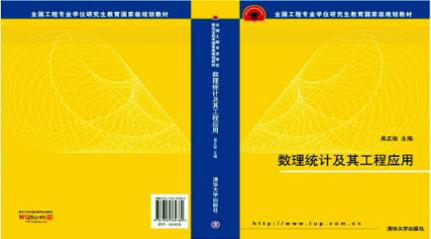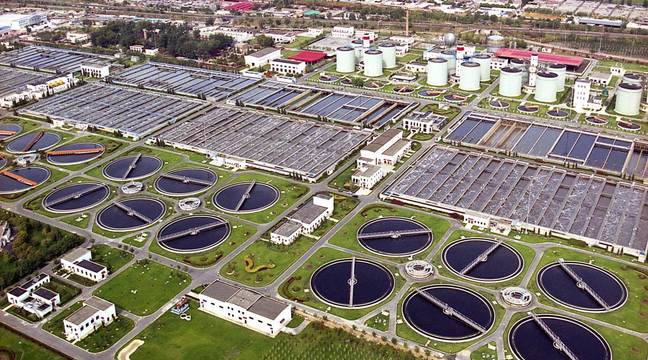
当前课程知识点:Water and Wastewater Treatment Engineering: Biochemical Technology > Chapter 3 Aerobic biofilm process > Section 3.5 Aerobic biological fluidized bed process > Section 3.5 Aerobic biological fluidized bed process
返回《Water and Wastewater Treatment Engineering: Biochemical Technology》慕课在线视频课程列表
返回《Water and Wastewater Treatment Engineering: Biochemical Technology》慕课在线视频列表
同学们好,下面我们来学习第三章的最后一节
好氧生物流化床工艺,这个工艺
实际上是在上个世纪的七十年代开始兴起
它主要是采用比重大于1的比较细小的这种惰性的颗粒
像砂、焦碳、陶粒,或者是活性炭这样的一些物质作为载体
在反应器内部采用非常高的上升流速
可以使这些载体颗粒,处在完全流化的状态
在这个颗粒载体的表面,会附着生长生生物膜
导致整个反应器内生物浓度非常高,传质的效率也非常高
所以这种好氧生物流化床工艺,是一种高效的好氧生物反应器
在这我们在化工里面曾经学过
关于颗粒载体的流化,实际上是由反应器内上升的水流所造成的
水力的上升流速在不同的阶段
可以造成这个载体,有三种状态
第一种就是相当于水的流速,上升流速比较小
所以这个载体层,还是一种固定状态,或者说是略有松动和膨胀
第二种是当这个上升流速达到一定程度之后
载体颗粒随着上升流速的带动
会在床池内呈流化状态
第三种当这个上升流速继续增加,就会导致载体
随着这个出水,完全被带出这个反应器
就成了一种所谓的输送系统,在我们水处理中间
在前面黄老师,给大家介绍的一些沉淀池或者沉砂池
要把,特别是沉砂池中间,要把沉到
沉砂池底部的砂粒排出的时候,我们通常会采用第三种
利用非常高的上升流速,甚至必要的时候还增加一些空气
把沉在沉砂池底部的沙粒
随着出水给带出这个系统
我们就使用了第三种状态
今天在这讲的是生物流化床,是用的第二种状态
根据供氧和脱除生物膜的方式的不同,我们可以将生物流化床
分成两相生物流化床和三相生物流化床
所谓的两相生物流化床,是在生物流化床的床体之外
专门增设充氧设备和脱膜设备,在床体的内部
只有液、固两相,当废水进入反应器之前
废水中间的溶解氧,可以的达到接近饱和
好比说,达到8-9mg/L
有的时候也还会采用纯氧直接作为气源
这时候可以使得进入反应器之前的废水中间的溶解氧浓度
达到30-40mg/L。而三相流化床
是直接在反应器内进行充氧,在床体的内部
有气、固、液三相共存,在这个过程中间
由于空气的进入,会导致气体的搅动会非常剧烈
载体颗粒之间摩擦也会非常剧烈
所以,就直接在里面可以实现,载体表面生物膜的自行脱落
因此,一般三相生物流化床就不需要在外部单设生物膜的脱落装置
也不需要在外面增设这个充氧装置
所以在工程上三相生物流化床的应用越来越多
而两相生物流化床的应用越来越少
这个图给出来的就是一个三相生物流化床的结构示意图
我们可以看到,在床体的底部是生物流化床
床上部是一个沉淀区
在底部,进水和进气分别进入上升管
形成一个上升流,载体在上升的气泡
和水流的带动之下,从底部会被带到床身的上部
在上部,由于这个放大的头部,水力流速减小以后
这些载体又会从这个外部,回流到生物床的底部
而上部,这是一个沉淀区,可以排出经过沉淀以后的初水
以及排放剩余的污泥,这是我们在一些实际工程上
生产规模的生物流化床,可以两个在一组,可以四个在一组
关于生物流化床的主体的构造,分成这样几个部分
第一个当然是重要的反应器,第二选择合适的载体
第三要采用一定的布水装置和充氧装置
以及必要的时候还要采用这个脱膜的装置
对于反应器来说,一般是呈这个圆柱状
高径比一般会采用3-4:1
通常我们会采用内循环的三相流化床
在内循环的三相流化床内部
我们要求升流区的截面积与降流区的面积之比,应该在1:1左右
关于这个生物流化床中间的载体,我们要求
第一,它的比重要略大于1,表面要比较粗糙
而且对微生物没有毒性,不会跟废水中间的一些物质发生反应
而且当然从价格上来说,希望它比较低廉
而且比较容易取得
在好氧的生物流化床中间,我们常用的载体有这样几种
一种是砂粒,像石英砂,还有无烟煤、焦炭、活性炭、陶粒
或者是一些塑料的颗粒,像聚苯乙烯的颗粒
生物固体的浓度跟载体的投加量有直接的关系
对于布水装置来说,对于两相生物流化床,布水的均匀十分关键
但是对于三相流化床来说,由于有气体的搅拌
所以布水设备并不是十分重要
而且在三相流化床中间,通常采用这种高径比比较大的这种反应器
也就是说,底部的这个布水,对截面,对整个生物流化床的流动
影响并不大,相比于其他的好氧的生物膜法工艺来说
生物流化床它有这样的一些优点
它的生物浓度非常高,可以到10-20gSS/L
容积负荷可以达到7-8kgBOD5/(m3·d)
水力停留时间,相对来说可以大大的缩短
因此它的占地面积,基建费用,会要小一些
它也没有污泥膨胀,或者是填料堵塞的问题
它能适应不同浓度范围的废水和较大的冲击负荷
由于它的容积负荷和床体的高度都非常大
所以它的占地面积非常小,好氧生物流化床工艺
主要的问题,还是在于它的工程设计和实际运行的经验还不足
在实际的运行中间,还有一定的困难
那么这一节内容到这,谢谢大家
-Section 0.1 Development Status of Wastewater Treatment Process
--Section 0.1 Development Status of Wastewater Treatment Process
-Section 0.2 Typical Processes of Wastewater Biological Treatment
--Section 0.2 Typical Processes of Wastewater Biological Treatment
-Section 1.1 Principles of wastewater aerobic biological treatment
--1.1 Principles of wastewater aerobic biological treatment
-Section 1.2 Principles and determination of wastewater biodegradability
--1.2 Principles and determination of wastewater biodegradability
-Section 1.3 Principles of wastewater anaerobic biological treatment
--Section 1.3.1 Principles of wastewater anaerobic biological treatment(1)
--Section 1.3.2 Principles of wastewater anaerobic biological treatment(2)
-Section 1.4 Principles of wastewater biological nitrogen removal
--Section 1.4 Principles of wastewater biological nitrogen removal
-Section 1.5 Principles of wastewater biological phosphorus removal
--Section 1.5 Principles of wastewater biological phosphorus removal
-Chapter 1 Homework
-Section 2.1 Basic concept of activated sludge process
--Section 2.1.1 Basic concept of activated sludge process
--Section 2.1.2 Basic concept of activated sludge process
-Section 2.2 Growth rule of activated sludge and its application
--Section 2.2 Growth rule of activated sludge and its application
-Section 2.3 Running mode of activated sludge process
--Section 2.3.1 Running mode of activated sludge process(1)
--Section 2.3.2 Running mode of activated sludge process(2)
-Section 2.4 Kinetics of active sludge process
--Section 2.4.1 Kinetics of active sludge process(1)
--Section 2.4.2 Kinetics of active sludge process(2)
--Section 2.4.3 Kinetics of active sludge process(3)
--Research and Development of Kinetic Model of Activated Sludge Process
-Section 2.5 Principle, calculation and equipment of aeration
--Section 2.5.1 Principle, calculation and equipment of aeration(1)
--Section 2.5.2 Principle, calculation and equipment of aeration(2)
-Section 2.6 Designing of activated sludge process
--Section 2.6 Designing of activated sludge process
-Section 2.7 Operation and management of active sludge process
--Section 2.7.1 Operation and management of active sludge process (1)
--Section 2.7.2 Operation and management of active sludge process (2)
-Chapter 2 Homework
-Section 3.1 Basic principle of biofilm
--Section 3.1 Basic principle of biofilm
-Section 3.2 Biofilter process
--Section 3.2.1 Biofilter Process (1)
--Section 3.2.2 Biofilter process (2)
--Section 3.2.3 Biofilter process (3)
-Section 3.3 Biodisk process
-Section 3.4 Biological contact oxidation process
--Section 3.4 Biological contact oxidation process
-Section 3.5 Aerobic biological fluidized bed process
--Section 3.5 Aerobic biological fluidized bed process
-Chapter 3 Homework
-Section 4.1 Oxidation ditch process
--Section 4.1 Oxidation ditch process
-Section 4.2 A-B process
-Section 4.3 SBR process
-Section 4.4 MBR process
-Chapter 4 Homework
-Section 5.1 Overview and characteristics of development of anaerobic biological treatment
--Section 5.1 Overview and characteristics of development of anaerobic biological treatment
-Section 5.2 Anaerobic digester
--Section 5.2 Anaerobic digester
-Section 5.3 Anaerobic contact process and anaerobic filter process
--Section 5.3 Anaerobic contact process and anaerobic filter process
-Section 5.4 UASB process
-Section 5.5 Other anaerobic biological treatment process
--Section 5.5 Other anaerobic biological treatment process
-Section 5.6 Operation management of anaerobic biological treatment process
--Section 5.6 Operation management of anaerobic biological treatment process
-Chapter 5 Homework
-Section 6.1 Introduction
-Section 6.2 Biological nitrogen removal process and technology
--Section 6.2 Biological nitrogen removal process and technology
-Section 6.3 Biological phosphorus removal process and technology
--Section 6.3 Biological phosphorus removal process and technology
-Section 6.4 Simultaneous nitrogen and phosphorus removal process
--Section 6.4 Simultaneous nitrogen and phosphorus removal process
-Chapter 6 Homework
-Section 7 Natural biological treatment process
--Section 7 Natural biological treatment process
-Chapter 7 Homework
-Section 8.1 Source, nature and treatment of sludge
--Section 8.1 Source, nature and treatment of sludge
-Section 8.2 Sludge thickening and digestive stability
--Section 8.2 Sludge thickening and digestive stability
-Section 8.3 Sludge conditioning, dehydration and incineration
--Section 8.3 Sludge conditioning, dehydration and incineration
-Chapter 8 Homework
-Section 9 Wastewater Discharge and Reuse
--Section 9 Wastewater Discharge and Reuse
-Chapter 9 Homework

